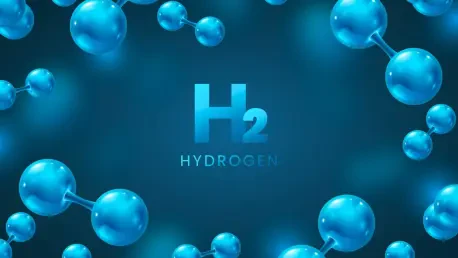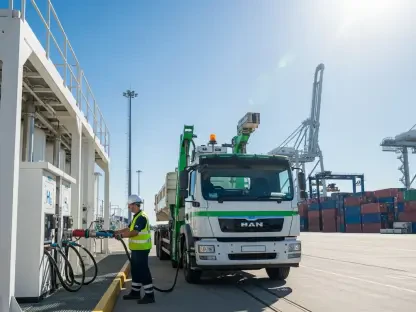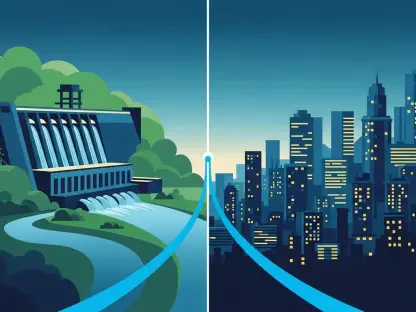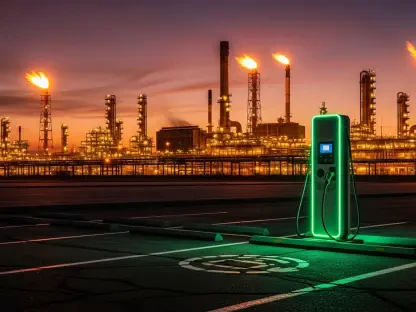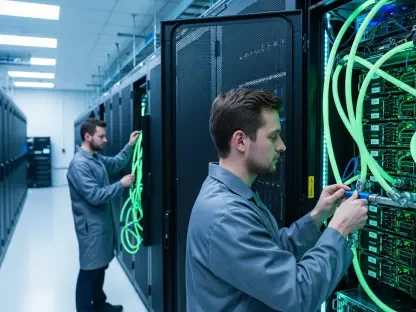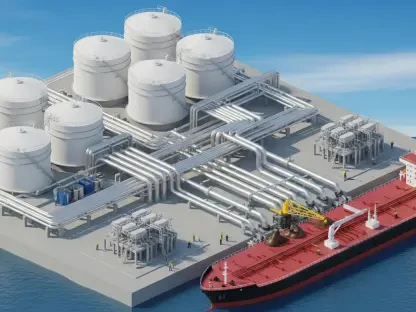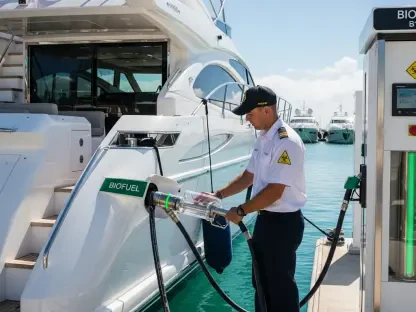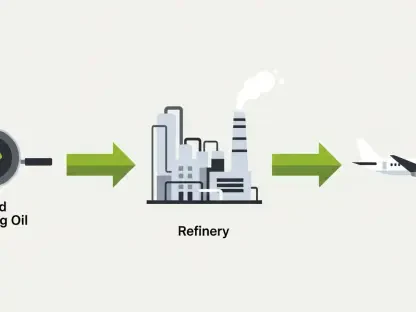Introduction
Imagine a world where the massive cargo ships crisscrossing the oceans, carrying over 80% of global trade, no longer contribute to the planet’s greenhouse gas emissions, and this vision is becoming a tangible goal as the maritime industry faces immense pressure to decarbonize amid tightening environmental regulations and growing public demand for sustainability. The shift toward alternative fuels represents a pivotal transformation for a sector historically reliant on heavy, carbon-intensive fuels. This FAQ article aims to address the most pressing questions surrounding this transition, exploring the challenges, innovations, and strategies driving change. Readers can expect to gain insights into the types of fuels being adopted, the hurdles to implementation, and the key players pushing the industry toward a carbon-neutral future.
The maritime sector’s journey is not just about compliance with targets set by bodies like the International Maritime Organization (IMO); it’s about redefining how goods move across the globe in an environmentally responsible way. By delving into specific fuels like hydrogen and ammonia, this piece will clarify why these alternatives are gaining traction and what needs to happen for widespread adoption. From safety concerns to technological advancements, the content will provide a comprehensive look at a complex but critical evolution in global shipping.
Key Questions on Alternative Fuels in Global Shipping
What Drives the Shift to Alternative Fuels in Shipping?
The maritime industry is under intense scrutiny to reduce its environmental footprint, as shipping accounts for nearly 3% of global greenhouse gas emissions. The IMO has set ambitious goals, including a 20% reduction by 2030, a 70% cut by 2040, and net-zero emissions by 2050. Traditional fuels like heavy fuel oil are no longer viable for meeting these targets, pushing the sector to explore cleaner options. Beyond regulatory pressure, investor expectations and economic incentives to avoid future compliance costs are accelerating the move away from fossil fuels.
Alternative fuels are seen as essential because efficiency improvements alone cannot achieve the required emission reductions. Options like hydrogen and ammonia offer the potential for zero-emission operations from tank to wake, alongside minimal air pollutants. This shift is critical for an industry where vessels have long lifespans and require future-proof solutions to remain competitive in a rapidly changing regulatory landscape.
Which Alternative Fuels Are Leading the Transition?
Among the array of options, hydrogen and ammonia have emerged as frontrunners for decarbonizing shipping. Hydrogen, often used with fuel cells, is being tested in smaller vessels such as ferries and tugs due to its clean operation, producing only water as a byproduct. Ammonia, on the other hand, shows promise for deep-sea shipping, particularly in bulk and gas carriers, thanks to its higher energy density compared to hydrogen and potential for large-scale production.
The adoption of these fuels is still in the early stages, with pilot projects paving the way. Dual-fuel vessel designs, which allow ships to operate on both conventional and alternative fuels, are becoming a popular interim solution as supply chains and bunkering infrastructure develop. While no oceangoing vessels currently run solely on these fuels, dozens of ammonia-ready ships are under construction, signaling a gradual but steady momentum toward broader use.
What Are the Safety Challenges with Hydrogen and Ammonia?
Safety remains a significant barrier to the widespread use of hydrogen and ammonia in maritime applications. Hydrogen’s high flammability and low ignition energy create risks of leaks and fires, compounded by the need for cryogenic storage that can affect structural integrity. These properties demand specialized containment systems and rigorous safety protocols tailored to the confined environment of a ship.
Ammonia presents different but equally serious concerns due to its toxicity and corrosive nature. Exposure can pose health risks to crews, necessitating advanced ventilation systems and controlled bunkering processes to minimize hazards. Both fuels require innovative vessel designs and extensive crew training to manage risks effectively, highlighting the need for industry-wide standards to ensure safe handling and operation at sea.
What Is Needed for Successful Adoption of Alternative Fuels?
Implementing alternative fuels in shipping requires a multifaceted approach addressing regulatory, technological, and operational gaps. Currently, specific IMO regulations for hydrogen and ammonia are absent, falling outside existing codes for natural gas fuels. Until comprehensive standards are developed, expected around 2028, vessels must undergo a risk-based approval process, with interim rules from classification societies like DNV providing temporary guidance.
Beyond regulation, vessel designs must adapt to the lower energy density of these fuels, often requiring larger storage tanks and integrated safety systems. Technological maturity is another prerequisite, as engines and fuel systems need to be refined for reliability and efficiency. Equally important is workforce readiness, with tailored training programs essential to equip crews with the skills to handle these fuels safely and respond to emergencies.
How Are Companies Innovating in This Space?
Corporate innovation is a driving force behind the transition to alternative fuels, with some companies leading the charge through integrated solutions. Developments in propulsion and fuel systems are crucial, including ammonia gas turbines for large carriers and hydrogen fuel cell systems for smaller vessels. Advanced energy storage technologies, such as immersion cooling systems, are also being introduced to enhance efficiency and safety.
These efforts often involve collaboration with classification societies to ensure compliance and certification, validating the technologies for real-world application. Such initiatives demonstrate how industry players are addressing both technical and operational challenges, creating a foundation for zero-emission shipping. The focus on holistic solutions underscores the importance of partnerships across shipbuilding, technology providers, and regulatory bodies to scale adoption.
Summary of Key Insights
The exploration of alternative fuels in global shipping reveals a sector at a turning point, balancing the urgent need for decarbonization with practical challenges. Hydrogen and ammonia stand out as promising solutions, with pilot projects and dual-fuel designs marking significant progress despite their limited current use. Safety concerns, from hydrogen’s flammability to ammonia’s toxicity, remain critical hurdles, necessitating specialized designs and training. Successful adoption hinges on clear regulations, mature technology, and industry collaboration, with corporate innovation playing a pivotal role in advancing zero-emission technologies.
These insights highlight the complexity of transforming a capital-intensive industry while underscoring the momentum building toward sustainability. The gradual shift, supported by regulatory pressure and technological advancements, points to a future where shipping can significantly reduce its environmental impact. For those seeking a deeper understanding, exploring resources from the IMO or classification societies can provide further details on emerging standards and pilot outcomes.
Final Thoughts
Reflecting on the journey of global shipping’s embrace of alternative fuels, it becomes evident that the path to sustainability is both challenging and inspiring. The industry has taken important strides with pilot projects and innovative designs, laying the groundwork for a cleaner future. As safety and regulatory frameworks evolve, the commitment to decarbonization grows stronger, driven by collaboration across stakeholders.
Looking ahead, the focus must shift to actionable steps, such as accelerating the development of bunkering infrastructure to support fuel availability worldwide. Investment in crew training programs should be prioritized to build confidence in handling new fuels. Additionally, fostering partnerships between regulators, shipowners, and technology providers will be essential to overcome remaining barriers and ensure that the vision of net-zero shipping becomes a reality in the decades to come.
